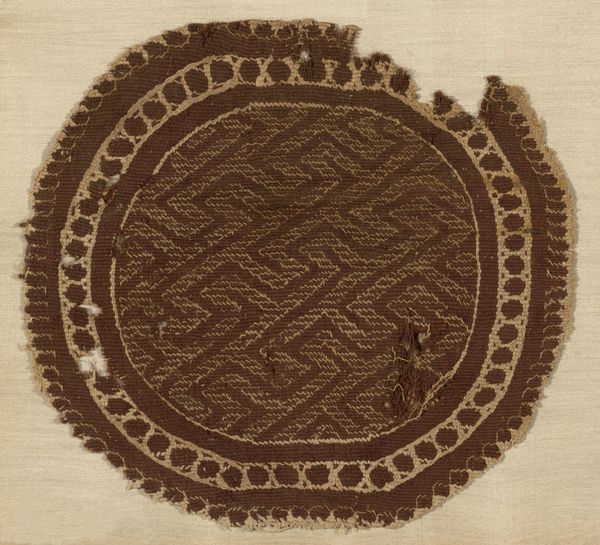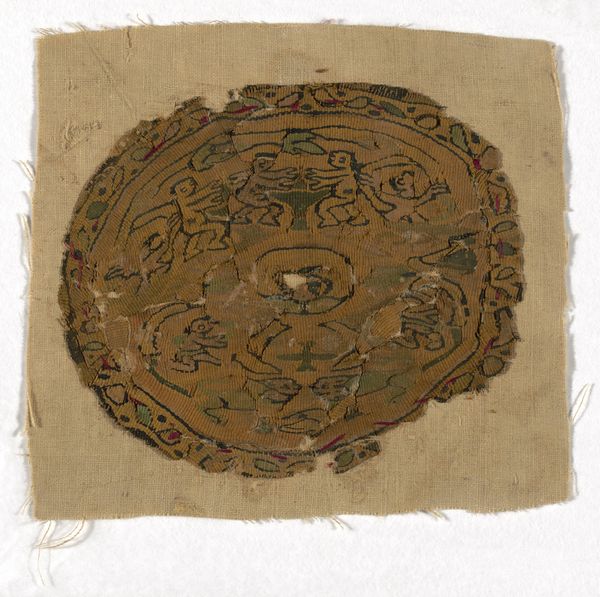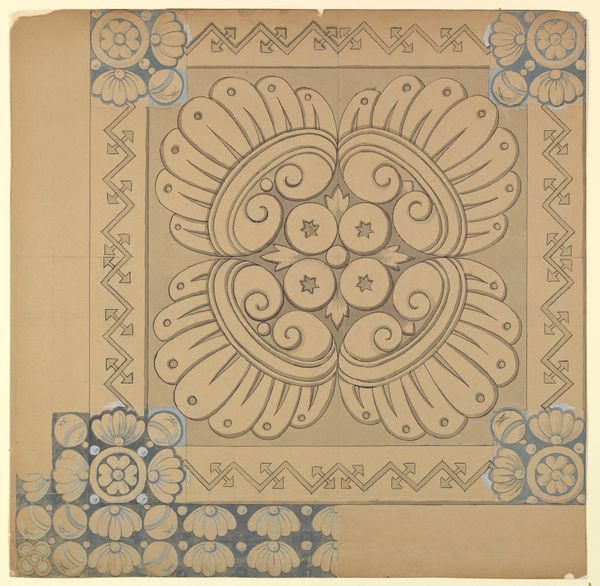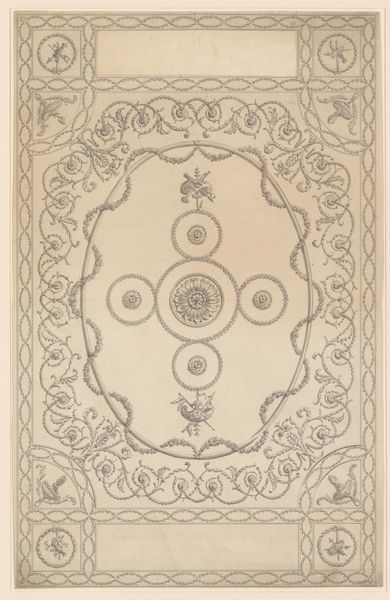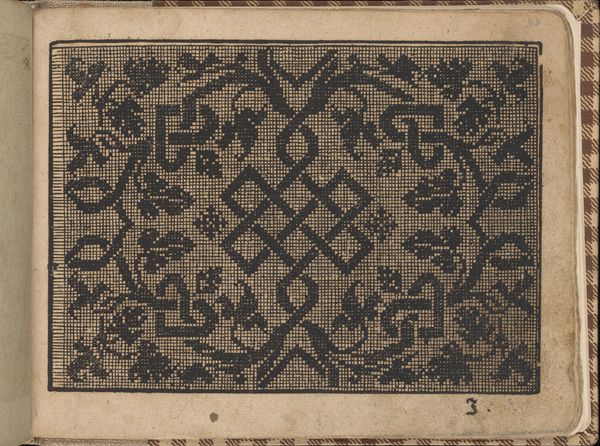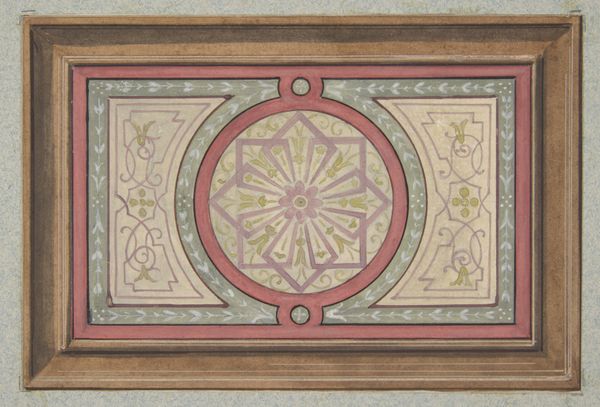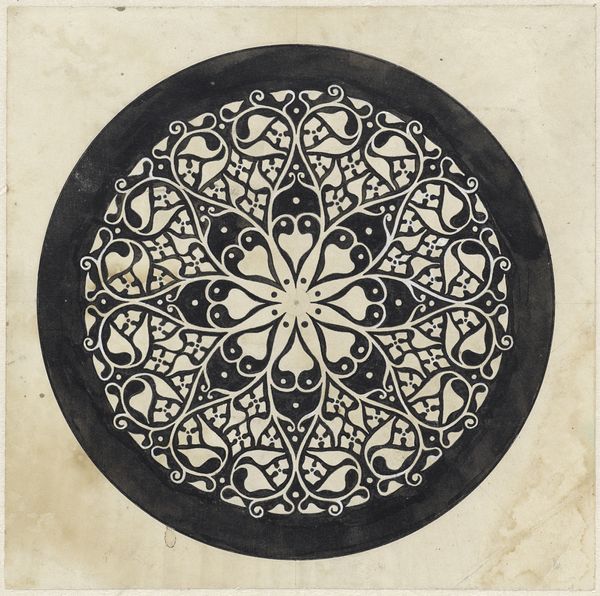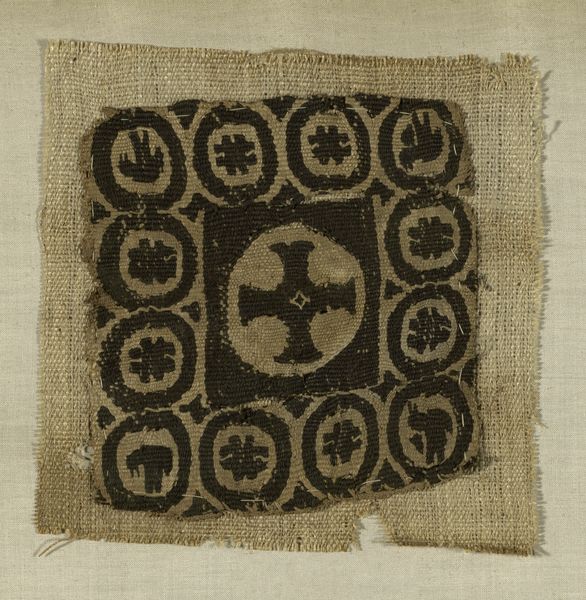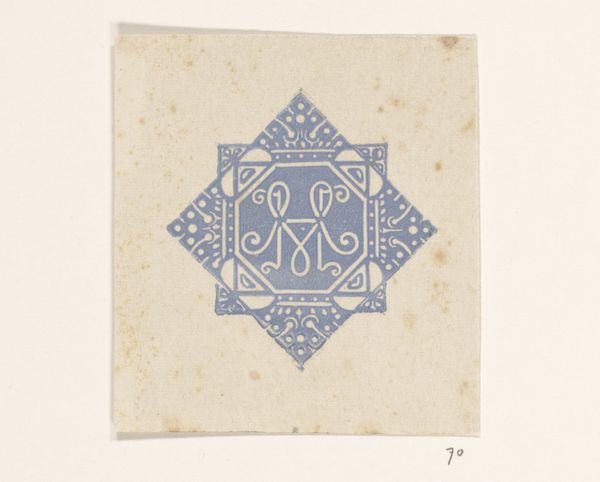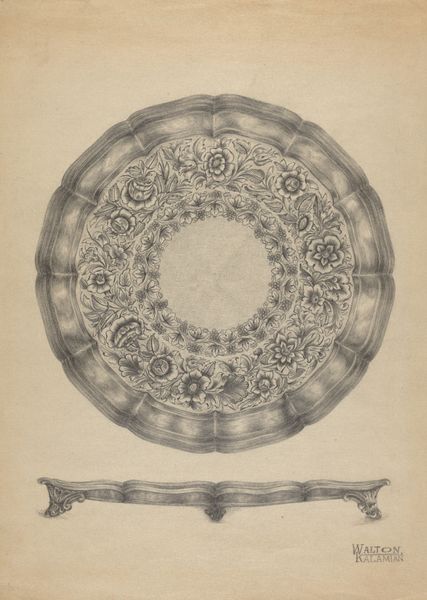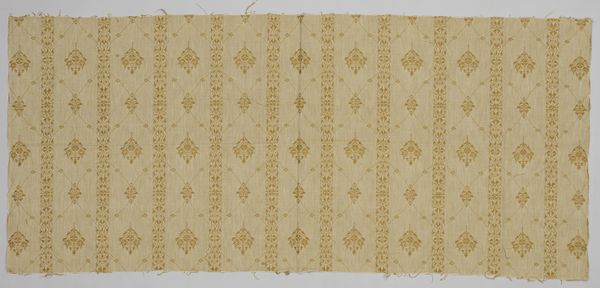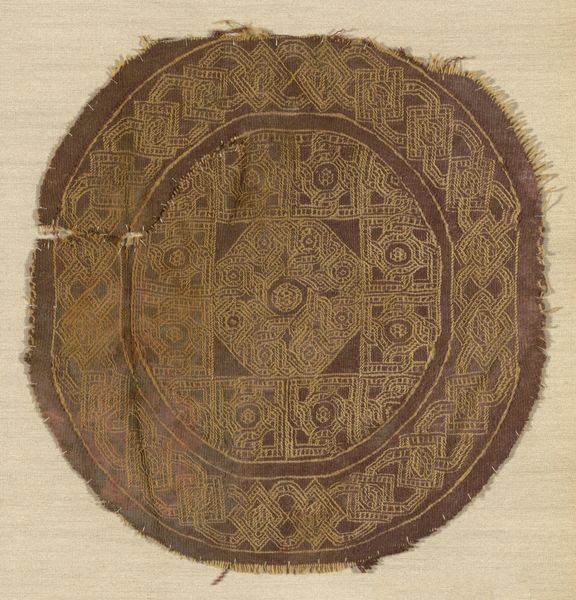
weaving, textile
#
weaving
#
textile
#
geometric
#
ancient-mediterranean
#
islamic-art
Dimensions: 22.7 × 23 cm (8 7/8 × 9 in.)
Copyright: Public Domain
Editor: Here we have a woven textile roundel from the Roman period, around the 3rd to 5th century. What strikes me is the intricate geometric design. How might we unpack its visual language? Curator: This textile presents a fascinating interplay of form and texture. Notice the concentric rings which define the composition. The central field exhibits a complex grid of interwoven lines, while the outer ring displays repeating motifs, a pattern almost mimicking script. Observe how these forms generate a certain visual rhythm across the textile. Editor: Yes, it is quite rhythmic! I wonder how the circular form informs its interpretation, or whether this specific composition echoes earlier traditions? Curator: The roundel, or circular form, in itself establishes a sense of completion and containment. The weaver utilized a restricted set of formal elements – line, shape, and repetition – to build a highly ordered and unified composition. Think about this piece’s materiality; the inherent qualities of the woven threads dictated the possible formal expressions. Does the textile suggest certain visual patterns? Editor: Well, I appreciate how your analysis pinpoints the formal unity of the concentric designs, revealing their internal rhythm and geometrical interplay. This encourages a more focused visual experience. Curator: Exactly! By recognizing these design patterns, we achieve a more structured interaction and enhanced perception of this textile’s design principles.
Comments
No comments
Be the first to comment and join the conversation on the ultimate creative platform.
